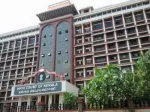Key Points
WHO airlifts 35 tons of supplies from Dubai logistics hub
Emergency medical teams deployed to worst-hit regions
Multipurpose tents provided to expand hospital capacity
Rapid response teams addressing critical health needs
WHO flew 35 tons of supplies from its Global Logistics Hub in Dubai to Yangon yesterday evening. Earlier, 60 tons of trauma kits, medicines, medical and surgical devices, and multipurpose tents were provided from the emergency stockpiles in Yangon for Mandalay, Naypyitaw, and Sagaing.
https://x.com/WHOSEARO/status/1907795948975304784
As per the statement, more life-saving supplies are being procured according to the needs identified by health partners and are being readied to be flown into Myanmar from WHO's Logistics Hub in the coming week.
Additional experts have been flown into Myanmar to strengthen WHO's support to earthquake response, including for coordination of Emergency Medical Teams on the ground, a key function that WHO supports in health emergencies.
WHO has also reached out to the Emergency Medical Teams Network and its quality-assured medical teams to support the ongoing relief efforts and the provision of medical care.
WHO continues to provide operational support for the deployment of Rapid Response Teams to the hardest-hit areas, including Naypyitaw, Mandalay, and Sagaing. These teams, which provide life-saving health services to vulnerable populations, have been on the ground since 29 March, delivering immediate medical care, conducting rapid assessments, and supporting local health authorities in disaster relief and recovery efforts.
Mandalay, Sagaing, and Naypyitaw, followed by Bago, Magway, Shan South, and East, are among the areas worst affected by the earthquake. Preliminary assessments indicated high numbers of casualties and trauma-related injuries, with urgent needs for emergency care, the statement said. With the disruption of electricity and water supplies and worsening access to health services, there is an increased risk of outbreaks of waterborne and foodborne diseases.
With many health facilities partially or fully damaged, the WHO has provided multipurpose tents to expand service capacity in hospitals overwhelmed by the influx of patients.
The epicenter of the earthquake was close to Sagaing township in Sagaing Region, which is home to approximately one-third of the country's internally displaced population, many of whom were already experiencing critical shortages of water, sanitation, hygiene, and shelter even before the earthquake struck, in view of the ongoing conflict.
To reach populations in remote areas, WHO has provided medical supplies to local organizations to treat acute watery diarrhea, acute respiratory infections, and skin infections.
WHO remains committed to working with all organizations and partners to ensure a coordinated and principled health response that leaves no one behind.







Reader Comments
We welcome thoughtful discussions from our readers. Please keep comments respectful and on-topic.